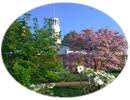Note: for ski trips to state parks with multiple small cabins or houses
1) Dedicate each vehicle to one cabin. That is, pack all the gear for that cabin in that vehicle. This makes the organization upon arrival much easier, when it will be cold, dark, and possibly windy and snowing. This is especially important when the cabins are separated by any appreciable distance – otherwise, people will be sorting gear between cabins for an hour or longer upon arrival (a huge time-waster). You don’t have to have all the Scouts for that cabin stay in the dedicated vehicle – but it doesn’t hurt to rearrange the vehicles that way at your last stop, if possible. If not possible, then the Scouts can rearrange upon arrival (but in that case be sure everyone knows where they’re going, and is properly dressed for the conditions).
2) Scouts (and adults) should wear boots – not sneakers – for travel to the cabins. They should be expecting to step out into snow or a muddy, icy mess.
3) If possible, pre-designate one cabin as the “assembly” cabin for meetings, movies, and similar. If the cabin is large, consider using it for all meals (but note that it is often easier to have each cabin eat separately, especially breakfasts).
4) Each cabin/vehicle should have an easily accessible flashlight for the arrival. Most cabins are completely dark, and most have no nearby “street lighting” either.
5) Each cabin/vehicle should have a boat tarp and either an old blanket or a bunch of newspapers to spread on top of the tarp, for placement of boots (including ski and snowboard boots the following days). A broom for brushing snow off boots should also be placed at the front door. This keeps the floors in the cabins clean and dry. This has to be accessible immediately upon arrival, and set up first thing. Scouts can either walk inside the cabins in socks, or have “house shoes” (sneakers) for use inside the cabins. A good system is to have two Scouts inside in sneakers to handle and semi-organize the gear (avoiding the usual dog-pile), while everyone else (in boots) relays everything from the vehicles. Scouts need to have their sneakers easily accessible in their gear for this purpose.
6) If the cabins are tight for space, some of the equipment lockers can be stored outside – but in general, it is always better if at least the food can be stored inside (to prevent it from freezing and to avoid raiding by local wildlife).
7) Each cabin should get a Motorola FM radio with fresh batteries, and a general protocol should be pre-established for turning them on and off, both upon first arrival at the site, and also for the following morning. This enables easy cabin to cabin or “all-hands” messages while everyone is getting sorted.
8) If the cabins are heated by fireplace only, each cabin/vehicle should have a box of fire making materials, also including a hatchet, ax, and saw. Do not assume that the cabins will have tinder or kindling (they will usually have logs on the porch). A Scout who knows what he’s doing should be assigned to open the flue, and start a quick-burning newspaper fire to start a draft, then once that burns out start a real fire.
9) All-Hands Meeting on Arrival Night for Ski Trips
* If purchased, hand out night snacks and water (not soda)
* Review any issues with the cabins (latrine locations, firewood, etc.)
* Review storage of personal gear (skis, boards, boots, etc.)
* Review Weather Forecast, make clothing and equipment recommendations
* Review Next Day Schedule – Reveille, Motorola Turn-Off/Turn On Times, Assembly, Travel, “Patience” Upon Arrival, Lodge Sitting Area and Lodge Adults, Troop Vans Open and Location, Late Day Reassembly Time and Place, After Assembly Activities (Mass, Dinner, Return to Cabins, Movie, etc.)
* Review “Personal Preparation and Personal Responsibilities” Handout
* Review Breakfast Protocol
* Review Slope Snack and Drink Handouts
* Hand Out or Prep “Scout ID’s”
* Establish Buddy Pairs
* Review Lessons (Resort offered, Troop offered), Skiing MB if offered.
* If an “Early Bird” Crew needs to leave in advance to arrange paperwork and rentals, discuss specifics now
* Photo Ops
* Discuss and warn against staying up late needlessly
* Q&A
10) Ancillary equipment sometimes needed for “rustic” Park Cabins: A bunch of high-wattage light bulbs. A fan to circulate air inside the cabin, especially important if the fireplace is distant from the sleeping area(s). If allowed, a small electrical heater and a good (heavy duty) extension cord, at least 25 feet long (50 feet long better).

